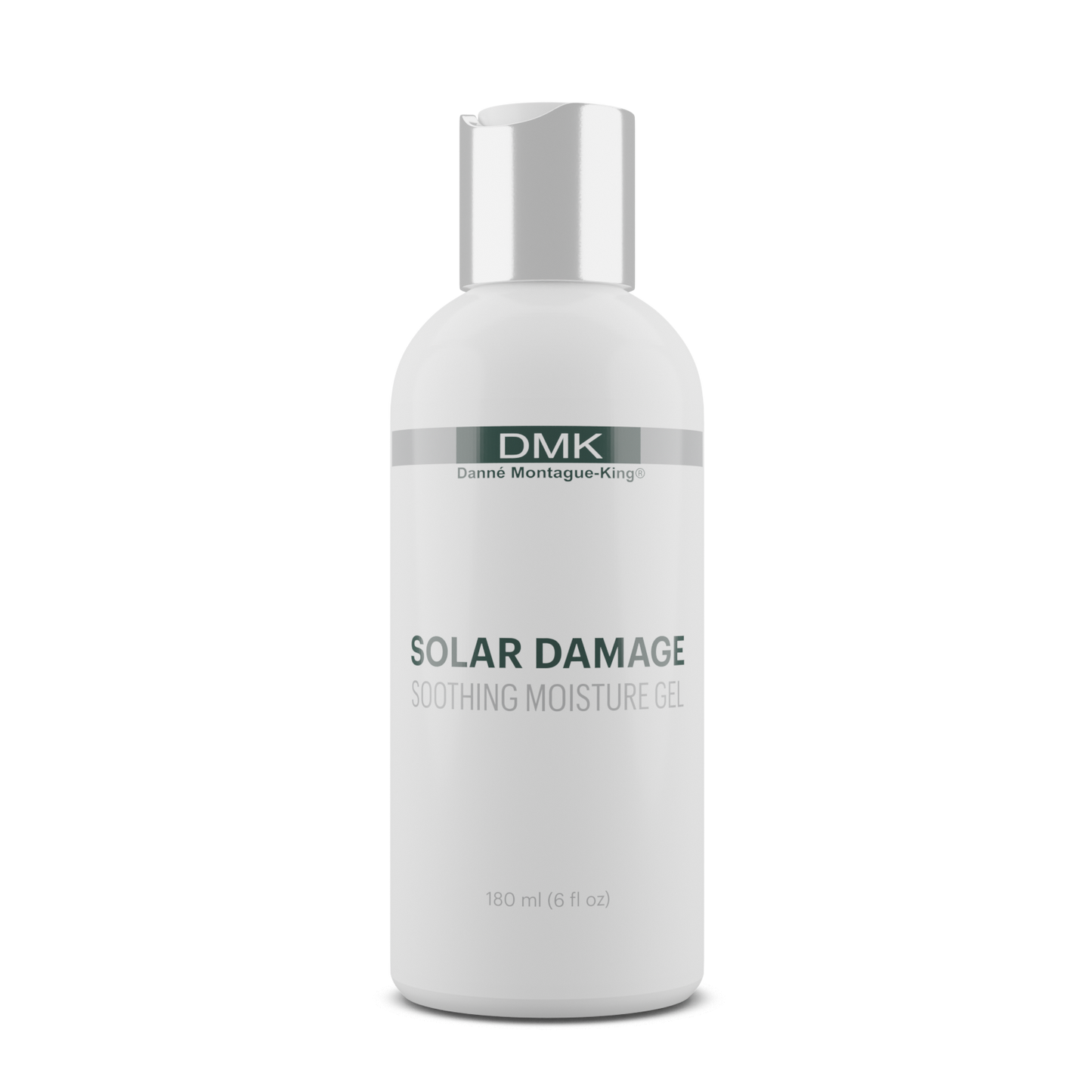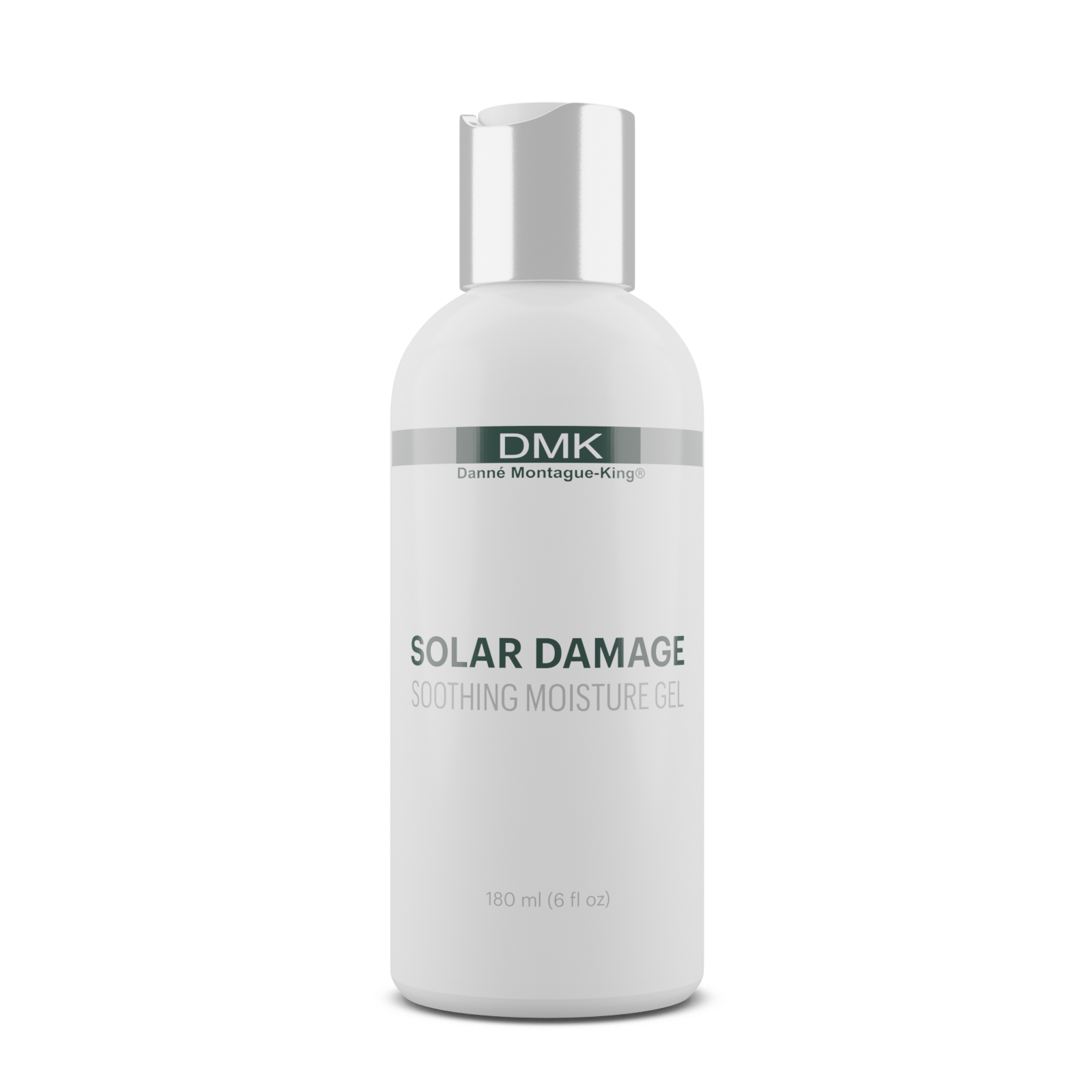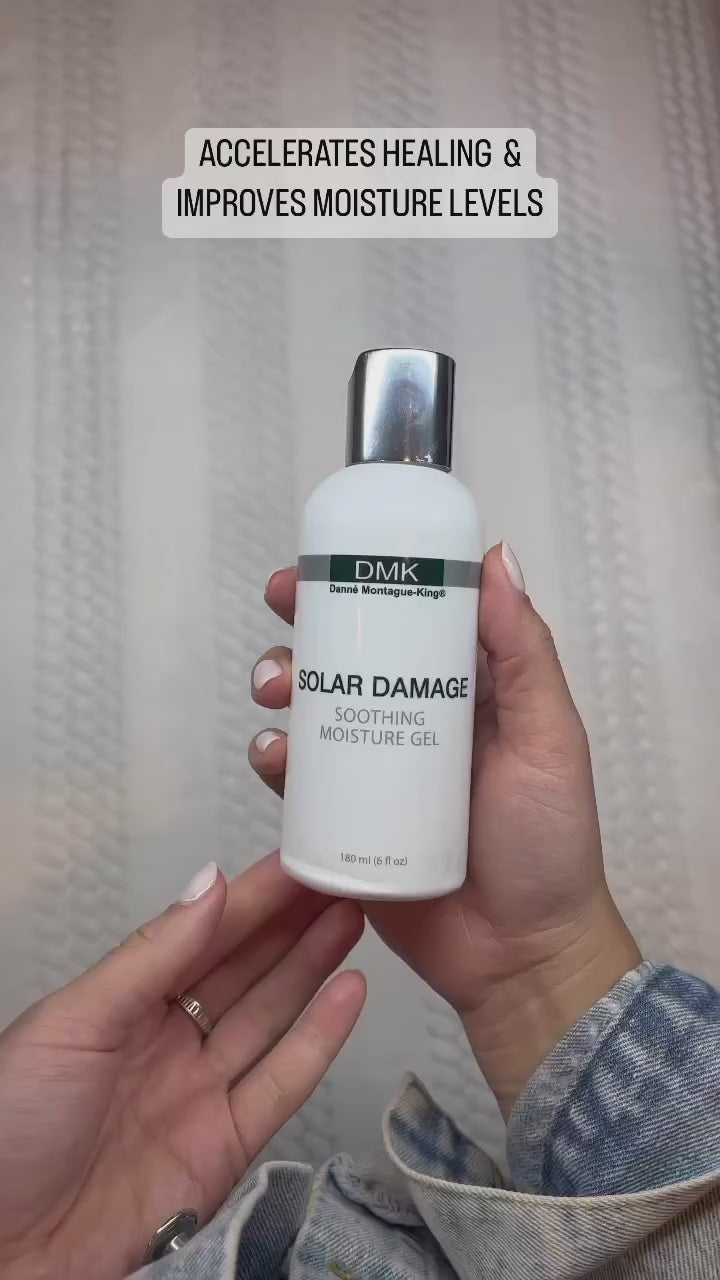DMK
Solar Damage Gel
Solar Damage Gel
Solar Damage soothes skin inflammation and redness. Restores the interstitial fluid of the epidermis, bringing hydration and vitality back, creating firmer plumper more replenished skin. Solar Damage gel has specific barrier protection effects, helping to protect and adds rich aloe and vitamin E, which aids in collagen rejuvenation.
How to Use
-
Cleanse skin and apply drops, serums, oils, sprays, and creams as directed.
-
Liberally apply Solar Damage to the application area.
- During the day, apply a DMK Sunscreen as the final step.
Pro-Tip
Pro-Tip
Use for barrier support on the face or body after ablative skin treatments, burns, or skin trauma. Also suited for weakened, dry, and stressed skin, acne, premature aging, sunburn, and inflamed conditions.
Key Ingredients
Key Ingredients
Aloe Barbadensis Leaf Extract — An antioxidant that hydrates, soothes, and conditions the skin while regenerating tissue. It is photoprotective, stimulates the immune system, and boosts collagen synthesis; aloe also contains antiviral properties, antiseptic saponins, and anti-inflammatory enzymes. It is incredibly nutrient-rich with 75 active compounds, including vitamins A, C, E, B12, folic acid, potassium, fatty acids, and more.
Anthemis Nobilis Flower Extract (Roman Chamomile) — A botanical antioxidant with medicinal properties. Chamomile is an ancient herb that quickly permeates the skin, used to soothe internal and external ailments. Topically, it has been used to treat wounds, eczema, and dermatitis. The extract contains over 120 biocompatible compounds, including antioxidant phenolic flavonoids and terpenoids. Two terpenoids, a-bisabolol and azulene, are anti-inflammatory, analgesic, and antibiotic.
Allantoin — Naturally found in the body, allantoin is mildly keratolytic (breaks down keratin) and encourages desquamation and cell regeneration. Allantoin locks moisture into the extracellular matrix, accelerates healing, and reduces hypersensitivity, making it ideal for distressed skin. It is found in plants like chamomile and treats dry skin, burns, acne, eczema, psoriasis, dermatitis, and allergies. It also absorbs the UV spectrum, protecting cell DNA.
Panthenol — A humectant and emulsifier that balances oil production and inhibits the proliferation of skin microbes. Panthenol aids in tissue repair, collagen production, barrier function, and the synthesis and metabolism of lipids. It is converted to pantothenic acid, which is naturally found in skin and hair, and required for normal epithelial function.
PCA (Pyrrolidone Carboxylic Acid) — Part of the skin’s natural moisturizing factor, PCA increases hydration and suppleness. It is a hygroscopic humectant that pulls moisture from the environment into the superficial epidermis.
Hyaluronic Acid (HA) — A glycosaminoglycan (GAG) and polysaccharide part of the intercellular matrix. HA is a hygroscopic molecule that permeates the skin and draws in water to replenish and maintain hydration levels. HA improves elasticity and forms a topical film that plumps and softens fine lines and wrinkles.
Squalane — A saturated fatty acid and a natural component of sebum. Squalane is antioxidant, hydrating, emollient, and helps restore skin lipids. The stabilized form of squalene.
Glycosaminoglycans (GAGs) — A group of water-binding polysaccharides that make up the extracellular matrix. GAGs contain hyaluronic acid and hold 1000x their weight in water, increasing hydration and reducing TEWL. They maintain the skin’s elasticity and turgidity by inhibiting MMPs and maintaining collagen and elastin fibers. These GAGs are marine sourced and improve varicosity, spider veins, and dark circles.
Tocopherol — Also known as vitamin E, this lipid-soluble antioxidant hydrates and improves water-holding capacity in the skin. Vitamin E is free radical scavenging, anti-inflammatory, and softening. It is also photoprotective, preventing keratinocyte “sunburn cell” formation and lipid peroxidation after UV exposure. Tocopherol also inhibits tyrosine, melanogenesis, and increases intracellular concentrations of glutathione, which repairs tissue and supports immune function.
Retinol — The vitamin A precursor to retinoic acid. Retinol helps restore vitamin A levels in damaged skin. It boosts cell turnover and helps reduce redundant cuticle, clears out congestion in follicles and improves texture, irregular pigmentation, and the visible signs of aging. As with other vitamin A derivatives, retinol is antioxidant, inhibits MMPs, and strengthens the skin by thickening the dermis.
Naturally Derived and Microbiome-Friendly Preservative Blend — Camellia Sinensis Leaf Extract (Green Tea), Allium Sativum Bulb Extract (Garlic), Cocos Nucifera Oil (Coconut), Lactobacillus Ferment, Yeast Ferment Extract
INGREDIENTS
Water/Aqua/Eau, Aloe Barbadensis Leaf Extract, Methyl Gluceth- 20, Glycerin, Butylene Glycol, Anthemis Nobilis Flower Extract (Limonene, Linalool, Geraniol, Citronellol), Dimethicone, Allantoin, Panthenol, PCA, Hyaluronic Acid, Caprylyl Glycol, Oleth-3 Phosphate, Carbomer, Tocopherol, Xanthan Gum, Squalane, Glycosaminoglycans, Retinol, Sodium Hydroxide, Camellia Sinensis Leaf Extract, Allium Sativum (Garlic) Bulb Extract, Cocos Nucifera (Coconut) Oil, Lactobacillus Ferment, Yeast Ferment Extract.
Is this product safe for pregnant or breastfeeding moms?
Is this product safe for pregnant or breastfeeding moms?
Pregnant or breastfeeding women should not use Solar Damage without a doctor’s approval.
Share



